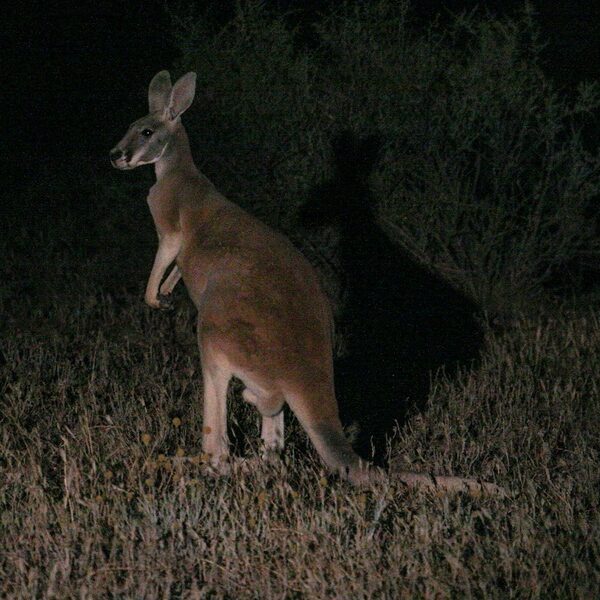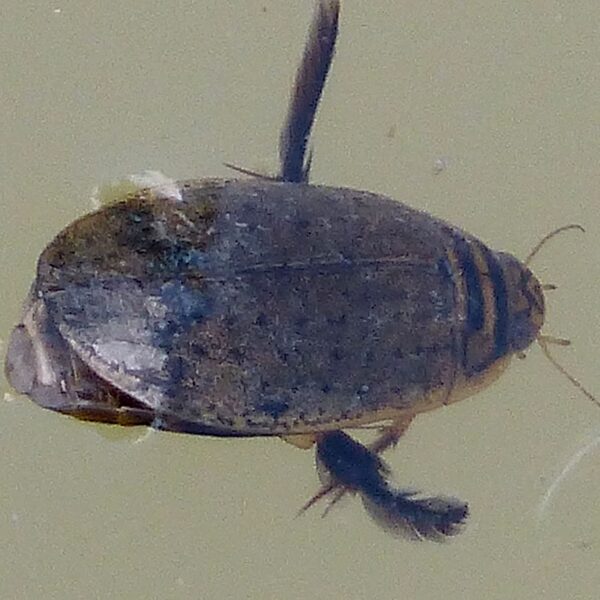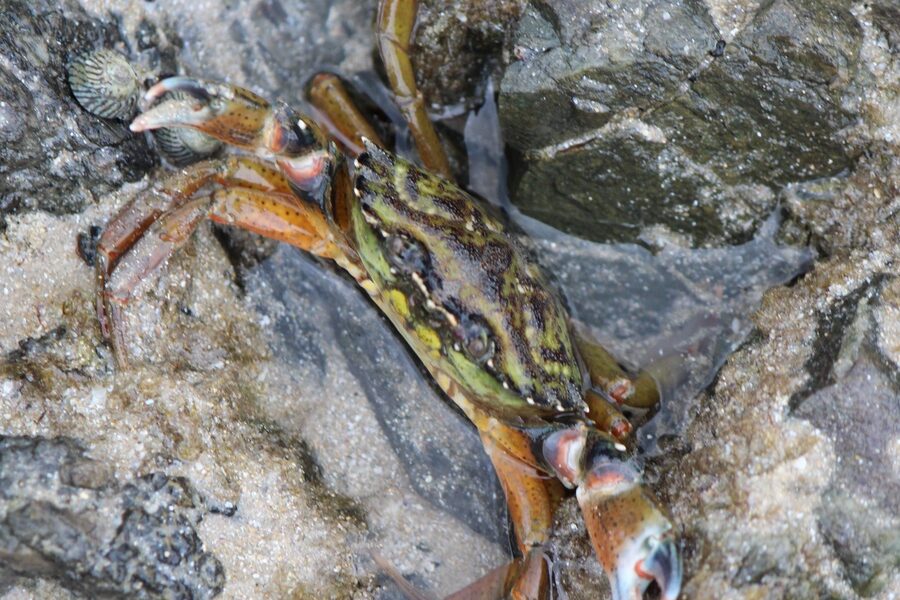Jamaica’s islands hold a surprising wealth of plants and animals found nowhere else, from cloudy mountain forests to lowland wetlands and coastal scrub. Habitat loss, invasive species and changing weather patterns are putting many native organisms at risk.
There are 34 Endangered Species in Jamaica, ranging from Bloodwood to Windsor’s Red Crab; data are organized with Scientific name,IUCN status,Range (main locations, max 15 words), which you’ll find below.
How recent and reliable is the conservation status in this list?
The entries are based mainly on the IUCN Red List and recent local assessments, but update dates differ by species—check each species’ IUCN entry or cited studies for the latest assessment year and supporting data.
What practical steps can visitors or locals take to help these species?
Support and respect protected areas, avoid disturbing or removing wildlife, report sightings to local conservation groups, reduce habitat damage (stay on trails, limit development), and back organizations working on restoration and invasive-species control.
Endangered Species in Jamaica
| Name | Scientific name | IUCN status | Range (main locations, max 15 words) |
|---|---|---|---|
| Jamaican Iguana | Cyclura collei | CR | Hellshire Hills, St. Catherine Parish; captive breeding at Hope Zoo. |
| Jamaican Petrel | Pterodroma caribbaea | CR | Last seen in Blue and John Crow Mountains; nesting sites unknown. |
| Jamaican Pauraque | Siphonorhis americanus | CR | Historically in southern dry limestone forests; currently no known population. |
| Hawksbill Sea Turtle | Eretmochelys imbricata | CR | Nests on various beaches; forages in coastal reefs and seagrass beds. |
| Green Sea Turtle | Chelonia mydas | EN | Nests on Jamaican beaches; forages in shallow seagrass beds. |
| Leatherback Sea Turtle | Dermochelys coriacea | EN | Nests on specific north and south coast beaches; migrates through Jamaican waters. |
| Jamaican Skink | Spondylurus fulgidus | CR | Possibly restricted to a single offshore cay; extirpated from the mainland. |
| Portland Least Gecko | Sphaerodactylus semasiops | CR | Extremely restricted range in the John Crow Mountains, Portland Parish. |
| Red-sided Galliwasp | Celestus hewardi | EN | Wet forests of the Blue Mountains and John Crow Mountains. |
| Jamaican Peak Frog | Eleutherodactylus alticola | CR | Summits of the Blue and John Crow Mountains above 1,200 meters. |
| Portland Bight Cave Frog | Eleutherodactylus cavernicola | CR | Known from a single cave in the Hellshire Hills, St. Catherine. |
| Jamaican Rock Frog | Eleutherodactylus sisyphodemus | CR | Cockpit Country, Trelawny and St. Ann parishes. |
| Web-footed Frog | Eleutherodactylus grabhami | EN | Limestone areas in central and western Jamaica. |
| Spotted-belly Frog | Eleutherodactylus junori | EN | Limestone forests of Manchester and Clarendon parishes. |
| Largetooth Sawfish | Pristis pristis | CR | Historically in coastal waters and rivers; now functionally extinct in Jamaica. |
| Smalltooth Sawfish | Pristis pectinata | CR | Historically in shallow coastal waters; now functionally extinct in Jamaica. |
| Nassau Grouper | Epinephelus striatus | CR | Coral reefs and rocky bottoms around the island. |
| Oceanic Whitetip Shark | Carcharhinus longimanus | CR | Offshore, deep-water environments around Jamaica. |
| Great Hammerhead | Sphyrna mokarran | CR | Coastal and offshore waters around Jamaica. |
| Scalloped Hammerhead | Sphyrna lewini | CR | Coastal and offshore waters; forms large schools. |
| Jamaican Giant Swallowtail | Pterourus homerus | EN | Cockpit Country and Blue and John Crow Mountains. |
| Windsor’s Red Crab | Sesarma windsor | CR | A few specific caves in Trelawny Parish, Cockpit Country. |
| Jamaican Clearwing | Greta enigma | EN | Blue Mountains and John Crow Mountains. |
| Jamaican Palm | Calyptronoma occidentalis | EN | Along rivers in western parishes like Westmoreland and Hanover. |
| Jamaican Harrisia Cactus | Harrisia gracilis | EN | Dry coastal limestone forests in parishes like St. Catherine and Clarendon. |
| Bloodwood | Laplacea haematoxylon | EN | Montane forests of the Blue Mountains. |
| Jamaican Cycad | Zamia amblyphyllidia | EN | Limestone forests and hillsides in several parishes. |
| Dancer’s Wild Coffee | Psychotria danceri | CR | Very small area within the Blue Mountains. |
| Proctor’s Bellflower | Portlandia proctorii | CR | A single limestone hill in Clarendon Parish. |
| Clarendon Sage | Salvia clarendonensis | CR | Known only from a small area in Clarendon Parish. |
| Purple Mistletoe | Dendropemon purpureus | CR | Dolphin Head Mountains, Hanover Parish. |
| Jamaican Pilea | Pilea proctorii | CR | Known from a single location in the John Crow Mountains. |
| Proctor’s Star-bush | Ouratea proctorii | CR | Limestone hills of St. Ann and Trelawny parishes. |
| Jamaican Tessaria | Tessaria jamaicensis | CR | Mason River Protected Area, Clarendon. |
Images and Descriptions

Jamaican Iguana
A large, herbivorous lizard once thought extinct. This Jamaican endemic faces severe threats from habitat loss and predation by introduced mongooses and dogs. A successful head-starting conservation program is crucial for its survival, releasing young iguanas back into protected areas.
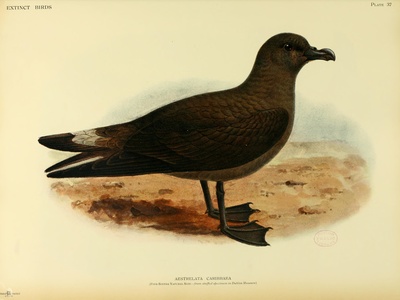
Jamaican Petrel
This enigmatic seabird is feared to be extinct, though it remains listed as Critically Endangered. No confirmed sightings have occurred since 1879. Major threats were introduced predators like rats and mongooses at its presumed mountain nesting grounds.

Jamaican Pauraque
A nocturnal, insect-eating bird that is also possibly extinct, with the last specimen from 1860. Like the petrel, it likely suffered from predation by introduced mammals. Its continued listing offers a sliver of hope it may be rediscovered.

Hawksbill Sea Turtle
Known for its beautiful, patterned shell, this turtle is critically endangered due to the illegal wildlife trade, habitat loss, and accidental capture in fishing gear. They are vital for reef health, as they feed on sponges that can otherwise overgrow corals.
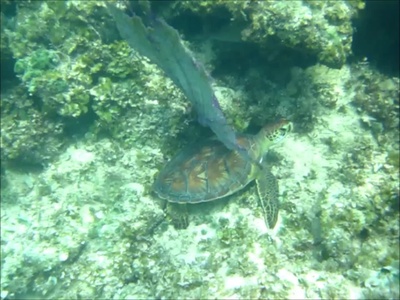
Green Sea Turtle
This large herbivorous sea turtle is endangered by habitat degradation, boat strikes, and poaching of eggs and adults. As one of the few large marine herbivores, they play a crucial role in maintaining the health of seagrass beds.
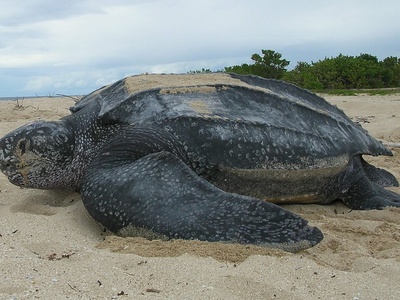
Leatherback Sea Turtle
The world’s largest turtle, distinguished by its leathery shell instead of a hard one. This ocean giant is endangered by plastic pollution, which it mistakes for its jellyfish prey, and entanglement in fishing gear. Its nesting beaches require strict protection.
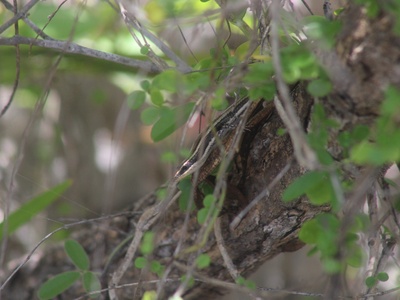
Jamaican Skink
This critically endangered lizard has been wiped out from mainland Jamaica, likely due to predation by the invasive mongoose. Any remaining populations are confined to tiny, mongoose-free offshore islands, making them extremely vulnerable to storms and other disturbances.

Portland Least Gecko
One of the world’s smallest lizards, this gecko is confined to a tiny area of wet limestone forest. Its survival is threatened by habitat destruction from logging, agriculture, and bauxite mining. Its small range makes it exceptionally vulnerable.

Red-sided Galliwasp
A large, secretive lizard endemic to Jamaica’s eastern mountains. This species is threatened by deforestation for coffee plantations and other agriculture, as well as predation by introduced mongooses. It is rarely seen, preferring to live under rocks and logs.
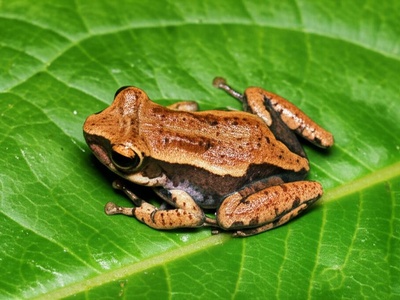
Jamaican Peak Frog
Living only in high-altitude cloud forests, this tiny frog is critically endangered by climate change, which threatens its misty habitat. It lays eggs on land that hatch directly into miniature frogs, skipping the tadpole stage.

Portland Bight Cave Frog
One of the world’s rarest frogs, this species lives exclusively in one limestone cave system. It is critically threatened by habitat disturbance from charcoal production, potential quarrying, and climate change affecting the cave’s delicate humidity.
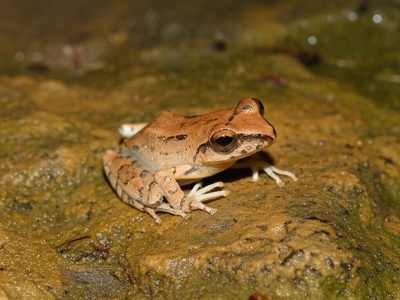
Jamaican Rock Frog
This tiny, critically endangered frog is found only in the wet limestone forests of Cockpit Country. Its survival depends entirely on this unique habitat, which is under severe threat from bauxite mining, deforestation, and agricultural expansion.
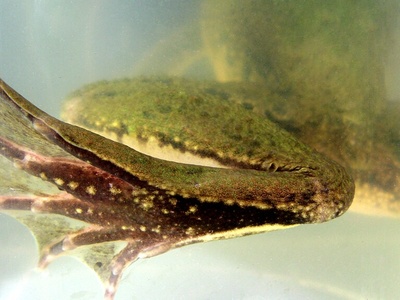
Web-footed Frog
Found among wet rocks and in caves, this frog is endangered by habitat destruction, particularly bauxite mining and deforestation. It is more aquatic than many of its relatives, relying on consistently damp environments which are now disappearing.

Spotted-belly Frog
This small, endemic frog is threatened by the severe degradation of its forest habitat, primarily due to bauxite mining, agriculture, and charcoal burning. Its population is now highly fragmented, isolating small groups and hindering their long-term survival.
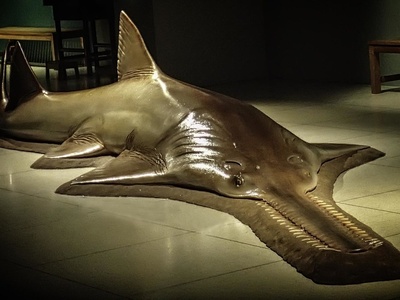
Largetooth Sawfish
A ray with a distinctive saw-like snout, this species is critically endangered worldwide and likely extirpated from Jamaican waters due to overfishing and entanglement in nets. Their snout, used for hunting, makes them especially vulnerable to capture.
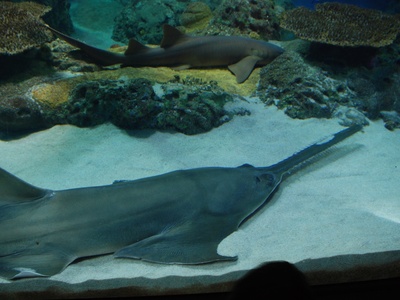
Smalltooth Sawfish
Like its relative, this sawfish is almost certainly gone from Jamaica. Its vulnerability to capture in all types of fishing gear led to a catastrophic decline. It prefers shallow, coastal habitats that have seen heavy human impact.
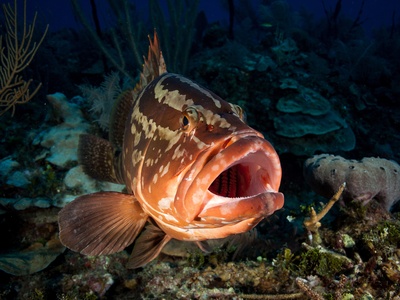
Nassau Grouper
A large, iconic reef fish that is critically endangered due to extreme overfishing, especially at its predictable spawning aggregations. The collapse of these gatherings has decimated populations, and recovery is slow for this long-lived species.

Oceanic Whitetip Shark
Once one of the most abundant sharks in the open ocean, its populations have plummeted due to being caught as bycatch in tuna fisheries. Its distinctive, white-tipped fins also made it a target for the shark fin trade.
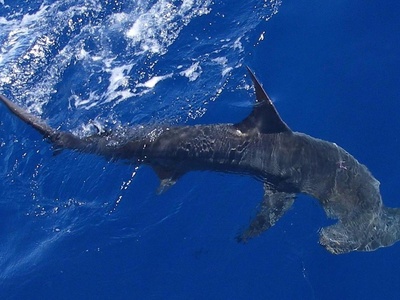
Great Hammerhead
The largest of the hammerhead sharks, this species is critically endangered due to overfishing for its large fins, which are highly valued in the fin trade. It is also caught as bycatch. Its slow reproductive rate makes it highly susceptible to population collapse.
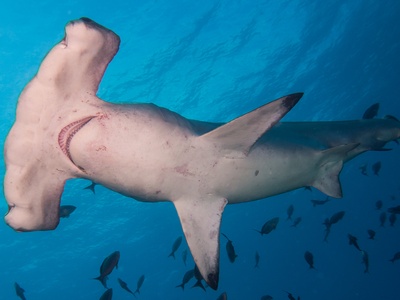
Scalloped Hammerhead
This schooling hammerhead is critically endangered, primarily due to immense fishing pressure for the shark fin trade and high rates of bycatch. Both adult and juvenile sharks are targeted, severely impacting the species’ ability to reproduce and recover.
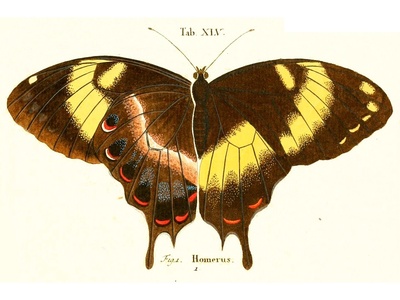
Jamaican Giant Swallowtail
The largest butterfly in the Americas, this stunning endemic is threatened by habitat destruction for agriculture and logging. Its sole larval food plant is also rare. Conservation efforts focus on protecting its remaining forest habitat and raising public awareness.

Windsor’s Red Crab
This critically endangered crab is a troglobite, living its entire life inside dark, limestone caves. It is highly vulnerable to any disturbance of its cave habitat, including pollution of the groundwater on which it depends for survival.
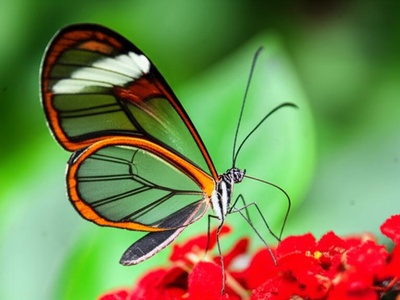
Jamaican Clearwing
A beautiful butterfly with transparent wings, making it look like a piece of glass in flight. It is endangered by the loss of its cool, wet mountain forest habitat due to deforestation and the impacts of climate change.
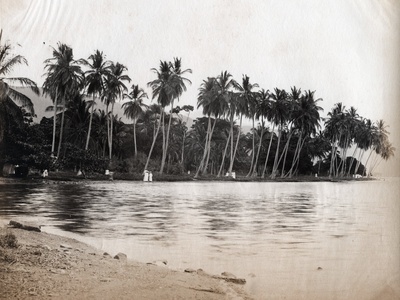
Jamaican Palm
An elegant, endemic palm tree found only along riverbanks in western Jamaica. It is endangered by habitat destruction as wetlands are drained for agriculture and development. Its presence is a key indicator of a healthy riverine ecosystem.
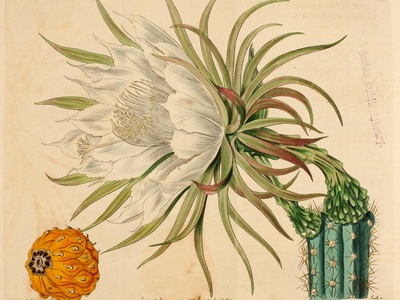
Jamaican Harrisia Cactus
A night-blooming, columnar cactus endemic to Jamaica’s southern dry forests. This unique habitat is severely threatened by charcoal production, urban development, and bauxite mining, pushing this striking cactus towards extinction. Its large, white flowers are pollinated by moths.
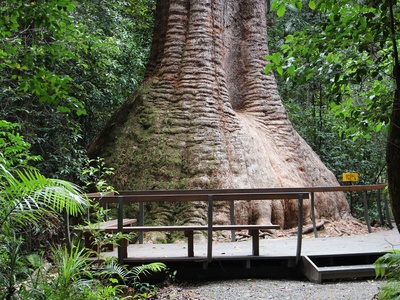
Bloodwood
A beautiful flowering tree endemic to the Blue Mountains, prized for its hard, red-hued wood. It has been heavily exploited by over-logging for timber. Habitat loss due to coffee cultivation and invasive species further threaten its survival.

Jamaican Cycad
A “living fossil,” this plant belongs to an ancient group that predates dinosaurs. It is threatened by habitat destruction for agriculture and development, and illegal collection for the horticultural trade. Its slow growth rate makes recovery very difficult.

Dancer’s Wild Coffee
A critically endangered shrub from the coffee family, known from only a handful of locations. It is threatened by habitat disturbance and the spread of invasive plant species that outcompete it. Its extreme rarity makes it a high priority for conservation.

Proctor’s Bellflower
One of Jamaica’s rarest plants, this beautiful shrub with large, white, bell-shaped flowers is known from only one location. This tiny range makes it critically vulnerable to habitat destruction from limestone quarrying for bauxite mining.

Clarendon Sage
This critically endangered plant species is endemic to a very specific area of central Jamaica. Its survival is precarious, threatened by habitat loss due to bauxite mining and agricultural expansion which has destroyed most of its native forest.

Purple Mistletoe
This parasitic plant is critically endangered and known only from one mountain range. It depends on specific host trees, so the destruction of its forest habitat through deforestation for agriculture and charcoal production directly threatens its existence.

Jamaican Pilea
This small, herbaceous plant is one of Jamaica’s most threatened endemics, found only in one spot. Its wet forest habitat is extremely fragile and susceptible to disturbance from logging, invasive species, and climate change-induced droughts.
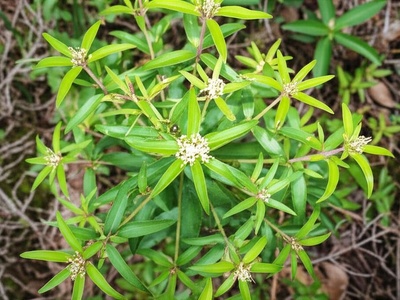
Proctor’s Star-bush
A critically endangered shrub that is endemic to the limestone forests of north-central Jamaica. The primary threat to its survival is the complete destruction of its habitat by bauxite mining, which strips away the soil and vegetation it needs.

Jamaican Tessaria
This small shrub is critically endangered and may even be extinct, as it has not been seen for many years. It was found in a unique savanna-like bog habitat that is threatened by changes in hydrology and conversion for agriculture.

